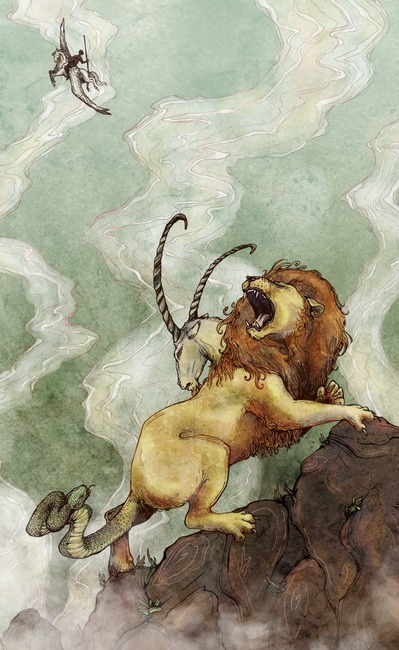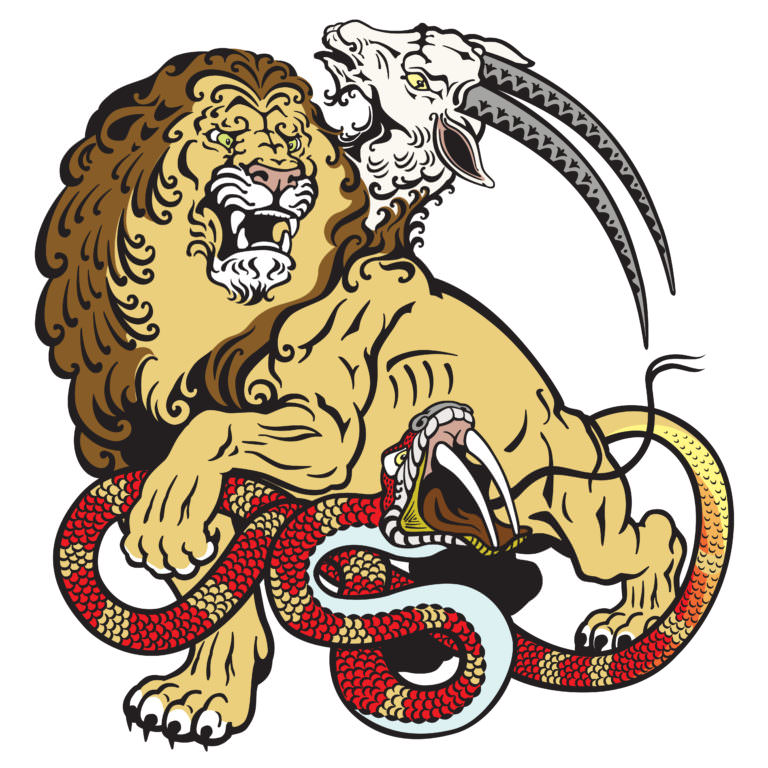


In the other version of the myth, it is stated that Bellerophon killed Chimera by thrusting a lance with lead on its tip into her throat which, later, melted and caused the beast to suffocate. Comment by Torrin Harrison on Jat 6:11 am. Also Riordans books twist and turn Greek myth to interlace the myth with modern times and attract the readers attention. The offspring of Typhon and Echidna included: Cerberus, the three-headed guard dog of the Underworld. In some myths it is told that Bellerophon killed the three-headed monster by shooting it with arrows from above flying on Pegasus. The Chimera is traditionally considered to have been a female, and was said to have given birth to the Sphinx and the Nemean lion. Through her parents, the Chimera was sibling to many Greek monsters and creatures. Sent by King Iobates of Lycia for this impossible mission, Greek hero Bellerophon killed this mythical creature with the help of Pegasus. According to the myth she laid waste on the land of Lycia killing cattle and creating fires all around. She is also told to be the mother of Sphinx and the Nemean Lion in some myths.īoth Homer in his work Illiad and Hesiod in Theogony mentioned Chimera as a creature breathing fire. The Corinthian type is fixed, after some early hesitation, in the 670s BCE the variations in the pictorial representations suggest to Marilyn Low. It is considered that the myth regarding Chimera originated from Yanartaş (which means “the burning rock” in Turkish language ) in Turkey where there are vents releasing burning methane gasĪs she was mostly referred to as a female creature it is safe to say Chimera is the “daughter” of Typhon and Echidna which makes the Lernean Hydra, Ladon and Cerberus her siblings. The Chimera first appears at an early stage in the proto-Corinthian pottery-painters repertory, providing some of the earliest identifiable mythological scenes that can be recognized in Greek art. According to the belief, she lived in Lycia (Likya in modern Turkey) in Anatolia. in French).īeestis clepid chymeres, that han a part of ech beest, and suche ben not, no but oonly in opynyoun.Chimera (Chimaera or Khimaira) is a mythical creature which is believed to be formed of three different animals a lioness, a goat and a snake.Ĭhimera’s head was that of a lioness while she had a goat’s head on her back and a snake’s head at the tip of her tail. The word was used generically for "any grotesque monster formed from parts of other animals " hence the figurative meaning "wild fantasy" first recorded 1580s in English (13c. Supposedly a personification of snow or winter, but the connection to winter might be no more than the ancient habit of reckoning years as "winters." It was held by the ancients to represent a volcano perhaps it was a symbol of "winter storms" (another sense of Greek kheima) and generally of destructive natural forces. khimaros), from kheima "winter season," from PIE root *gheim- "winter." Fabulous monster of Greek mythology, slain by Bellerophon, late 14c., from Old French chimere or directly from Medieval Latin chimera, from Latin Chimaera, from Greek khimaira, name of a mythical fire-breathing creature, slain by Bellerophon, with a lion's head, a goat's body, and a dragon's tail literally "year-old she-goat" (masc.


 0 kommentar(er)
0 kommentar(er)
